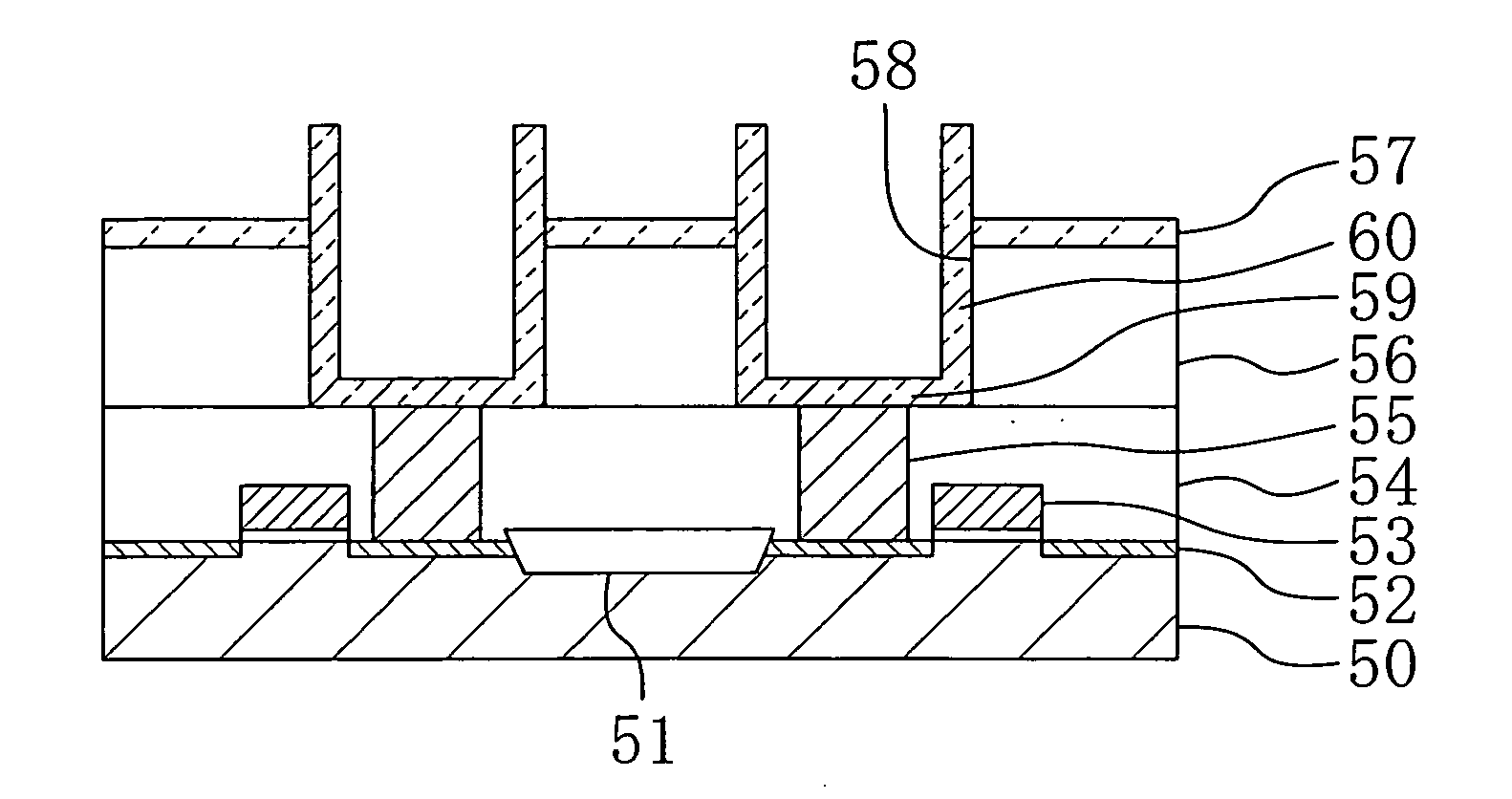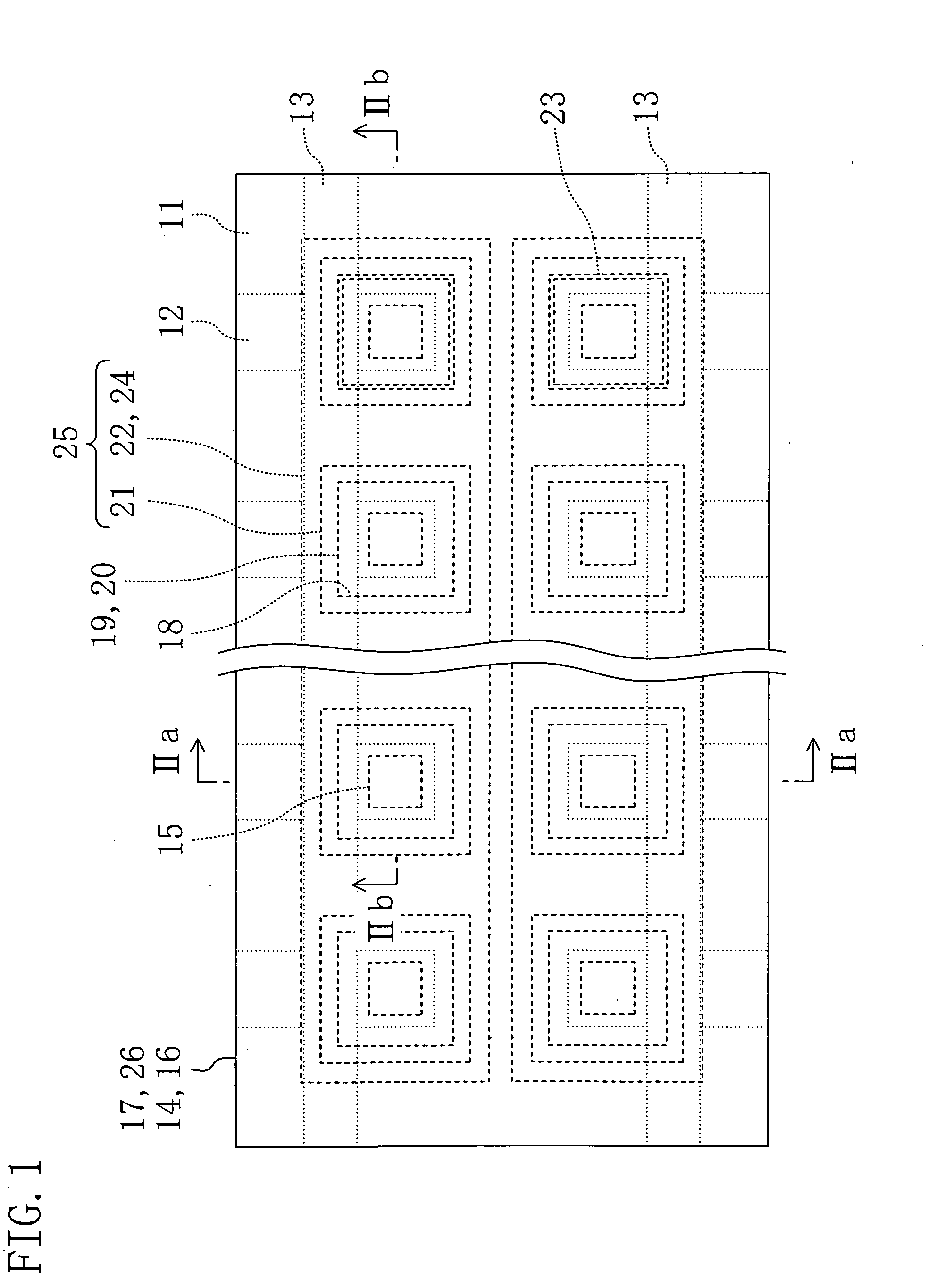Capacitor element and method for fabricating the same
- Summary
- Abstract
- Description
- Claims
- Application Information
AI Technical Summary
Benefits of technology
Problems solved by technology
Method used
Image
Examples
embodiment 1
Variation 4 of Embodiment 1
[0180] A capacitor element according to a fourth variation of the first embodiment will be described herein below with reference to FIGS. 7A, 7B, 8A, and 8B.
[0181]FIGS. 7A, 7B, 8A, and 8B show principal-portion cross-sectional views of the capacitor element according to the fourth variation of the first embodiment. The same reference numerals will be retained for those of the components shown in FIGS. 7A, 7B, 8A, and 8B which are common to the components shown in FIGS. 2A, 2B, 3, 4, 5A, 5B, 6A, and 6B and the description thereof will not be repeated.
[0182] Because the characteristic portion of the capacitor element according to the fourth variation is that seventh hydrogen barrier films 29 are disposed, the description will be given mainly to the characteristic portion herein below.
[0183] First, the structure of the capacitor element according to the fourth variation shown in FIG. 7A is greatly different from the structure shown in FIG. 5A in that the s...
embodiment 2
Variation 4 of Embodiment 2
[0235] A method for fabricating the capacitor element according to a fourth variation of the second embodiment will be described herein below with reference to FIGS. 7A, 7B, 8A, 8B, 9A to 9C, 10A, and 10B. The method for fabricating the capacitor element according to the fourth variation of the second embodiment is a method for fabricating the capacitor element shown in FIGS. 7A, 7B, 8A, and 8B. In contrast to the first to third variations described above, the fourth variation is characterized in that the seventh hydrogen barrier films 29 are disposed so that the description will be given mainly to a method for disposing the seventh hydrogen barrier films 29 herein below.
[0236] As shown in FIGS. 7A, 7B, 8A, and 8B, the isolation region 11 and the active regions 12 are formed on the semiconductor substrate 10 and the gates 13 are further formed thereon.
[0237] Next, SiO2 or SiN is deposited to cover the entire surface of the semiconductor substrate 10 by C...
embodiment 3
Variation 4 of Embodiment 3
[0282] A capacitor element according to a fourth variation of the third embodiment will be described herein below with reference to FIGS. 16A, 16B, 17A, and 17B.
[0283]FIGS. 16A, 16B, 17A, and 17B show principal-portion cross-sectional views of the capacitor element according to the fourth variation of the third embodiment. The same reference numerals will be retained for those of the components shown in FIGS. 16A, 16B, 17A, and 17B which are common to the components shown in FIGS. 12A, 12B, 13A, 13B, 14A, 14B, 15A, and 15B and the description thereof will not be repeated.
[0284] Because the characteristic portion of the capacitor element according to the fourth variation is that seventh hydrogen barrier films 69 are disposed, the description will be given mainly to the characteristic portion herein below.
[0285] First, the structure of the capacitor element according to the fourth variation shown in FIG. 16A is greatly different from the structure shown i...
PUM
 Login to View More
Login to View More Abstract
Description
Claims
Application Information
 Login to View More
Login to View More - R&D
- Intellectual Property
- Life Sciences
- Materials
- Tech Scout
- Unparalleled Data Quality
- Higher Quality Content
- 60% Fewer Hallucinations
Browse by: Latest US Patents, China's latest patents, Technical Efficacy Thesaurus, Application Domain, Technology Topic, Popular Technical Reports.
© 2025 PatSnap. All rights reserved.Legal|Privacy policy|Modern Slavery Act Transparency Statement|Sitemap|About US| Contact US: help@patsnap.com



